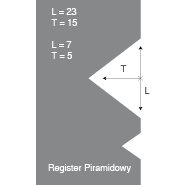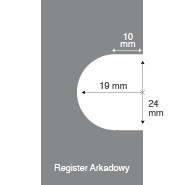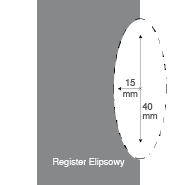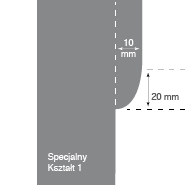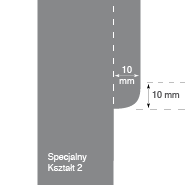Overview
An index upgrades the print product by die-cutting paper and thus exposing information, which facilitates a quick and well-directed navigation. This refinement turns your bound paper into a promotional catalogue or respectively an indispensable reference work.
Therefore, parts of sheets are cut out according to printed locator marks opposite to the spine. In general, the product is previously glued-off and trimmed on three sides. Similarly, softcover, hardcover, spiral and wire-o-binding as well as loose-leaf collections can be upgraded by an index.
Indices can be covered and uncovered depending on whether the introductory pages are shortened or not. The exposing is done by a full cut which shortens the pages at its full length.
It can be cut in a single run (A), but also in several runs (B+C) either side-by-side (B) or one below the other (C).

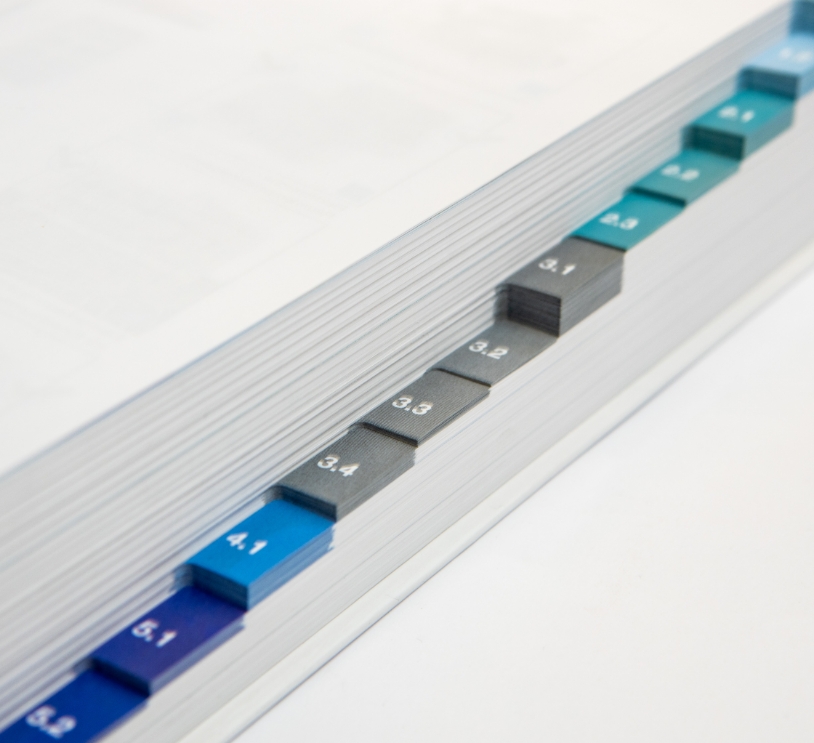
Angle cut
The angle cut is the classic form of indexing. As the production capacity is the biggest for this die-cutting form, it is particularly suitable for long runs and extensive print products.
The angle, tab height (head to foot), and depth (face to spine) are exceptionally variable, which allows a wide scope for the arrangement of indices in number and size. Moreover, the angle cut assures with its relatively big tab areas the best labeling options.
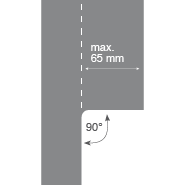
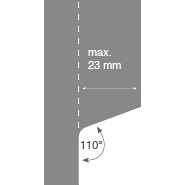
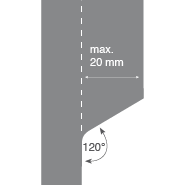
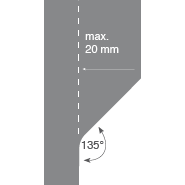
Thumb cut
This classic form of index cutting, also called cut-in index, is done by cutting out a round piece at the product´s edge.
A distinction is made between the covered and uncovered thumb cut. With the covered thumb cut only the pages of the previous index are cut out. With the uncovered one it is cut through all pages from the top page down to the respective index tab, so that all indices can be grabbed and seen from the top. In that case the piece between two cuts may not fall short of 4 mm. Thus, the minimum cutting frequency is lower, than with the angle or banner cut.
The handling is most practical with diameters of 18 – 22 mm, as this corresponds to the average thumb size. However, other sizes are possible, too. Please, keep in mind that the maximum cutting depth is up to 1 mm smaller, than the chosen radius.
The thumb cut is particularly suitable for extensive catalogues, dictionaries and guidebooks that either have only few categories or only little text on the tab area.
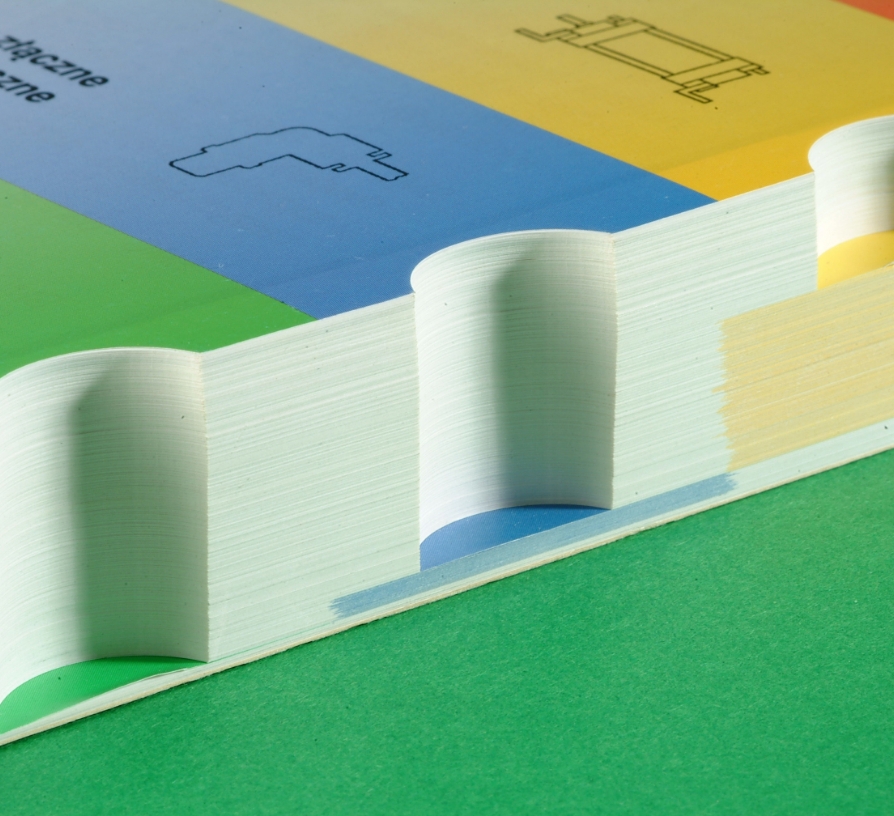

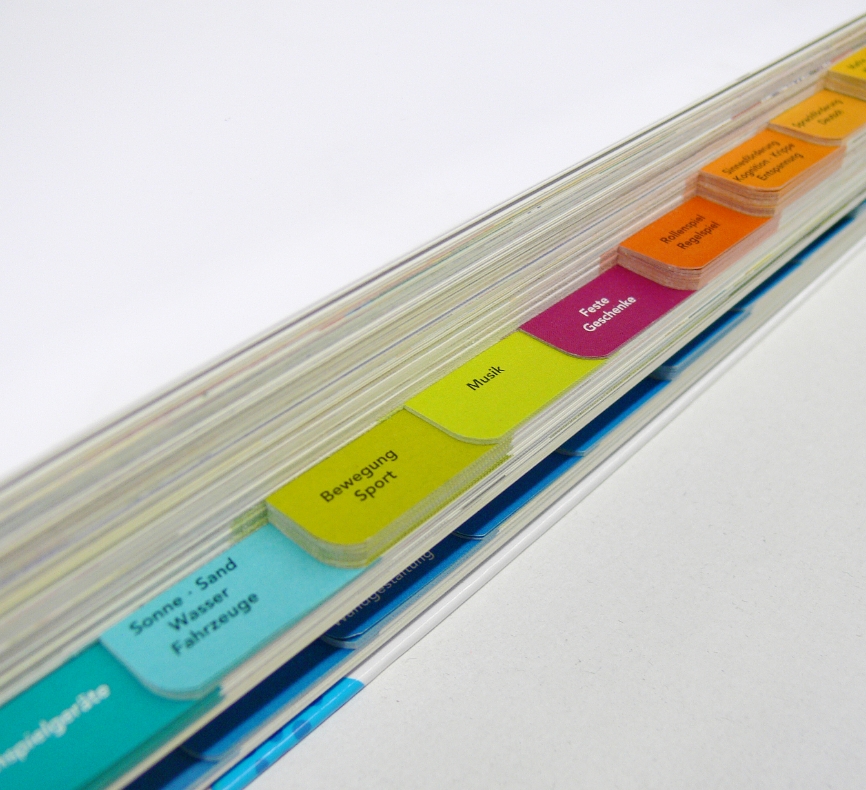
Banner cut
The banner cut bears a strong resemblance to the angle cut, with the difference that both corners, the inner and outer, are rounded. Thus, it gains in stability and appears more appealingly, which makes it the perfect choice for high quality products. Dog ears are largely avoided even after prolonged use.
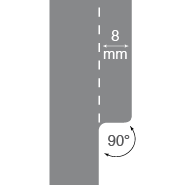
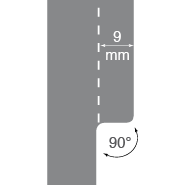

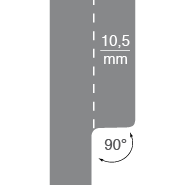
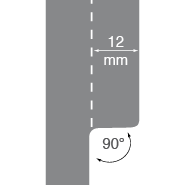
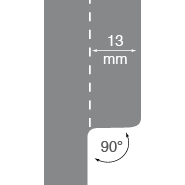

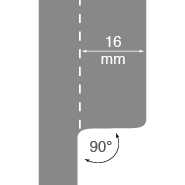
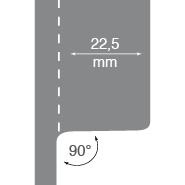
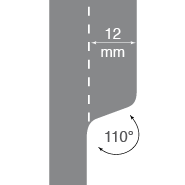
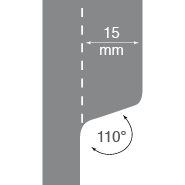


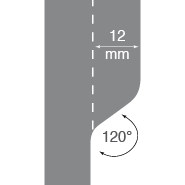
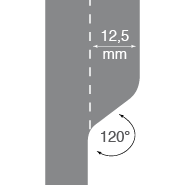
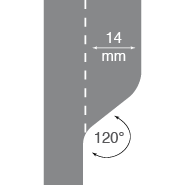
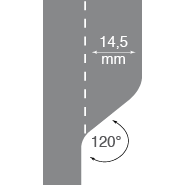
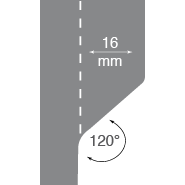
Panorama cut
The panorama cut, also called bathtub cut, is our most exclusive form of index cutting. Similar to the thumb cut a small part is cut out leaving an uncut part at both sides of the cut-in. Angles with a degree of 90°, 120° and 135° are possible, whereas, similar to the angle cut, the inner corners are rounded. In addition, with the 90°-knife there is the option to cut the inner corner angularly. The maximum cutting depth is in any case limited to 15 mm. The cut-in´s minimal length is limited as given in the table below; the maximum length is beyond the knife stock easily extendable through “nibbling”. Thereby, the index die has to be positioned several times lengthwise until the desired cut-in´s length is achieved.
This way of cut-in allows to place two different pieces of information in an orderly manner in only one run. This advantage makes it the perfect choice for multilingual dictionaries, glossaries, calendars and consulting reference sources.
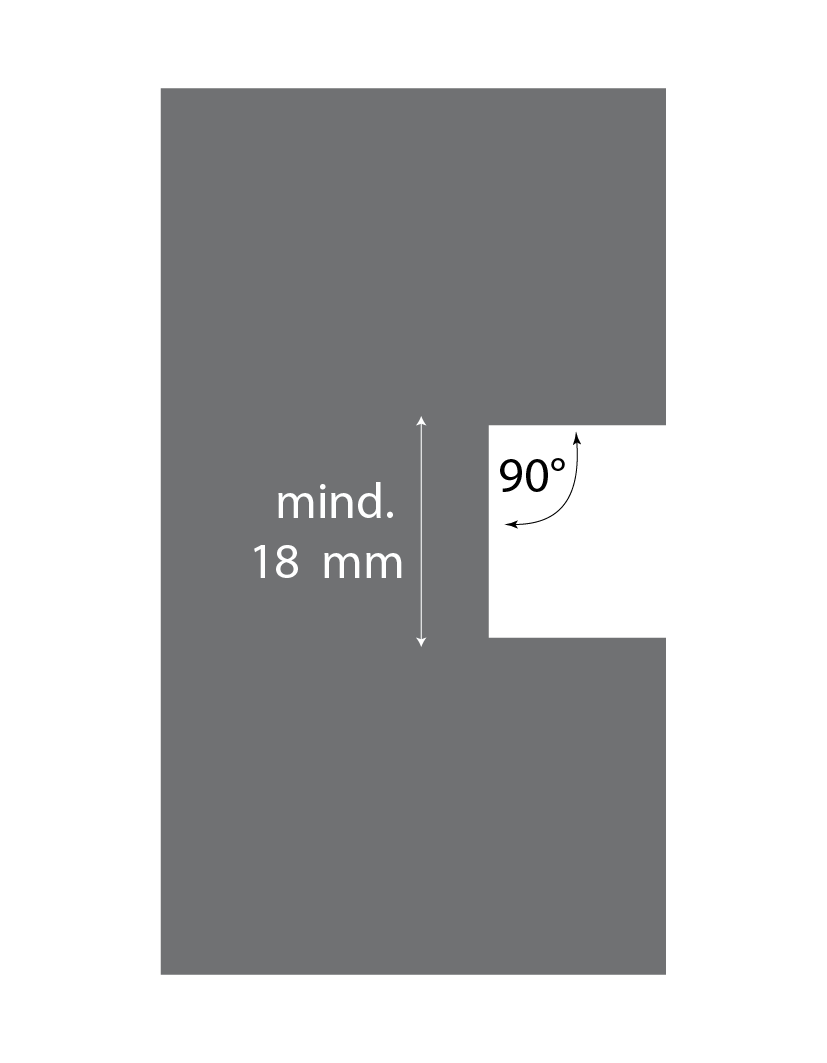
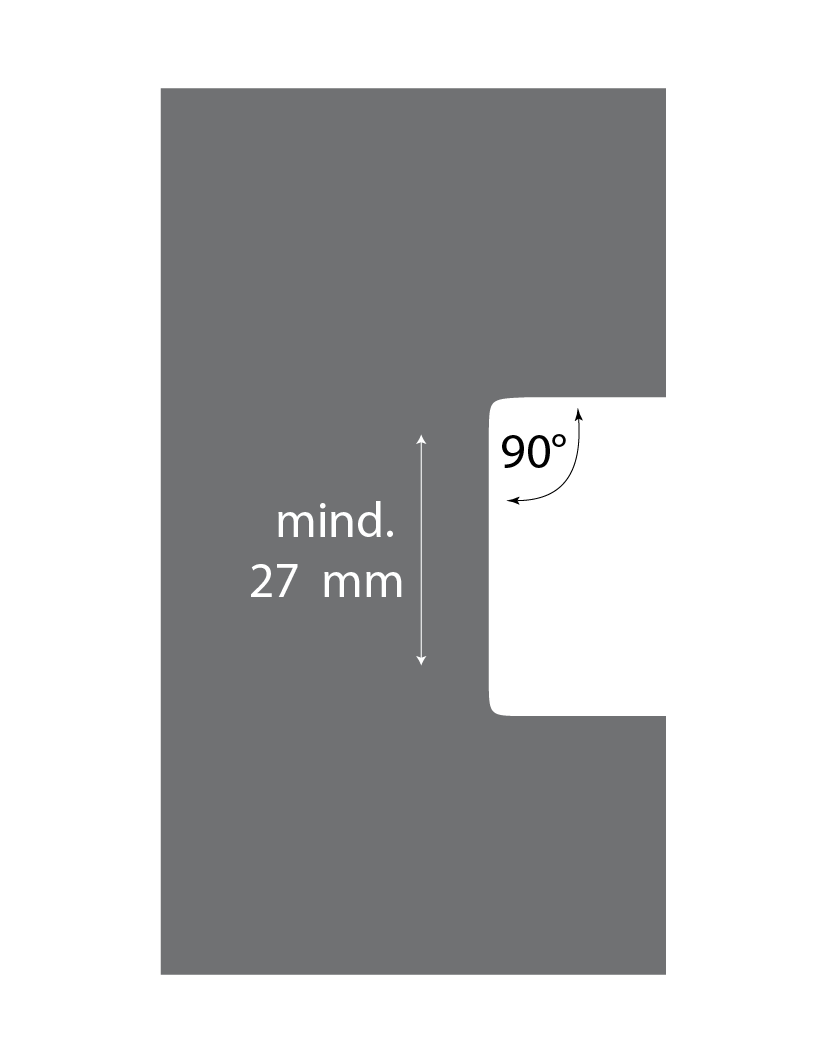
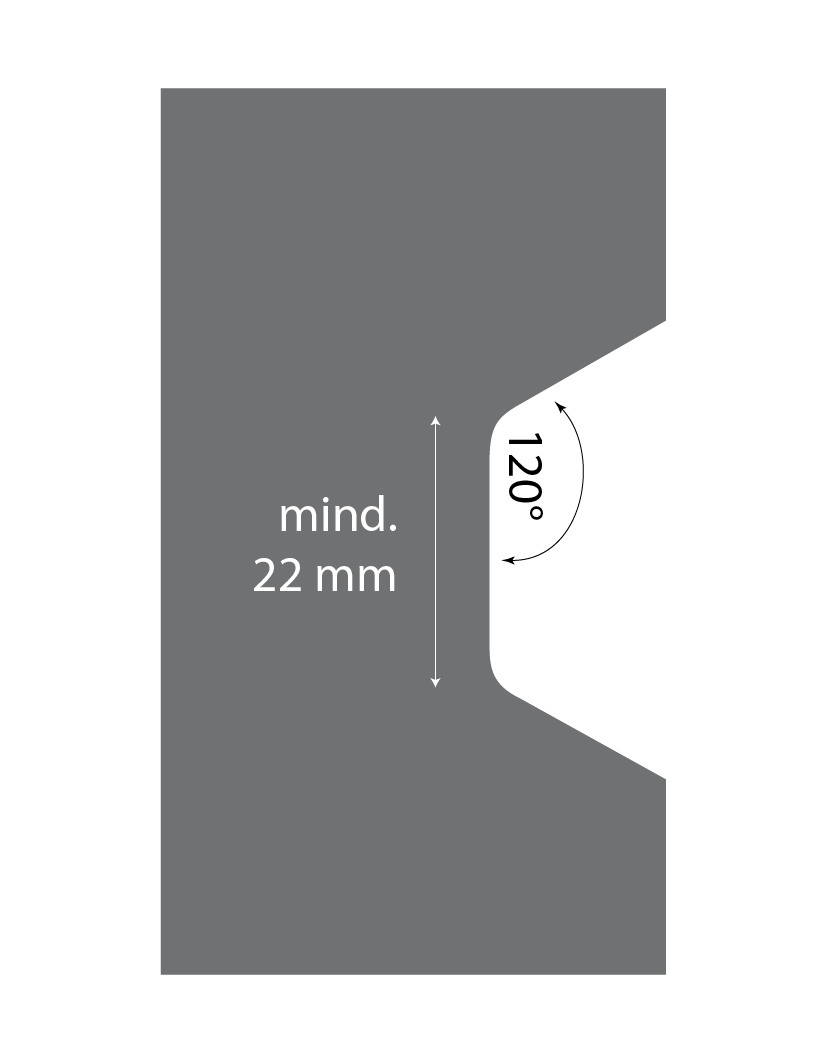
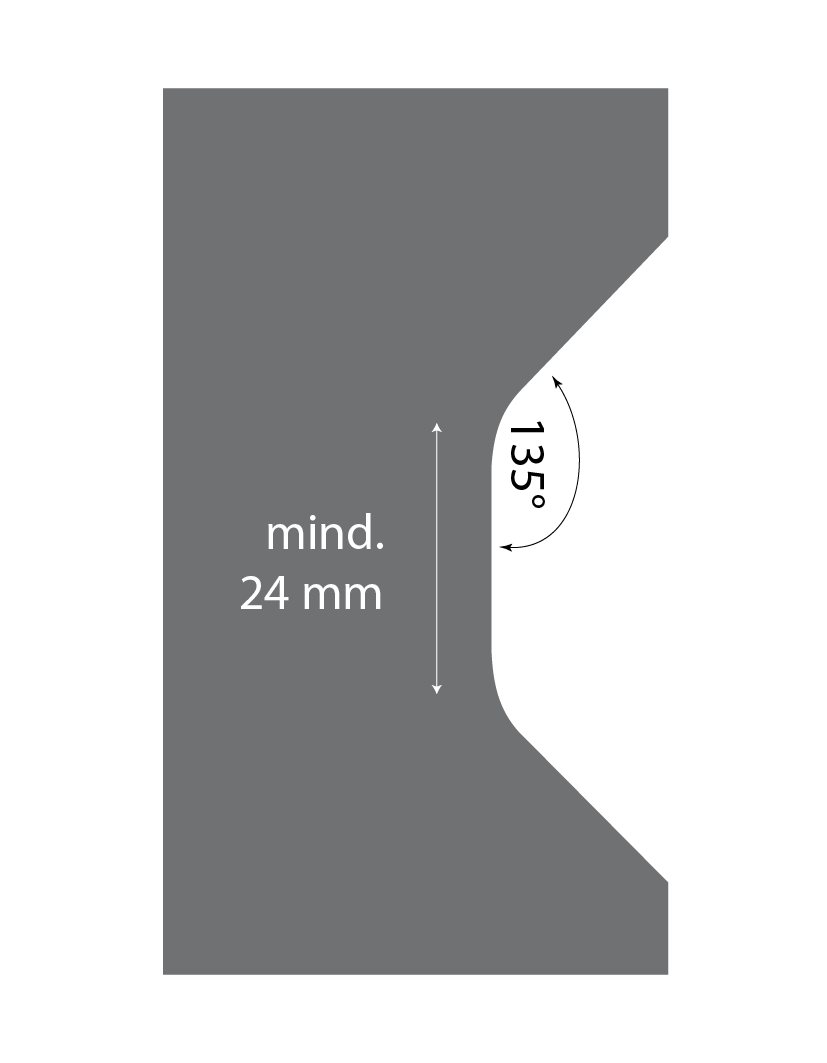
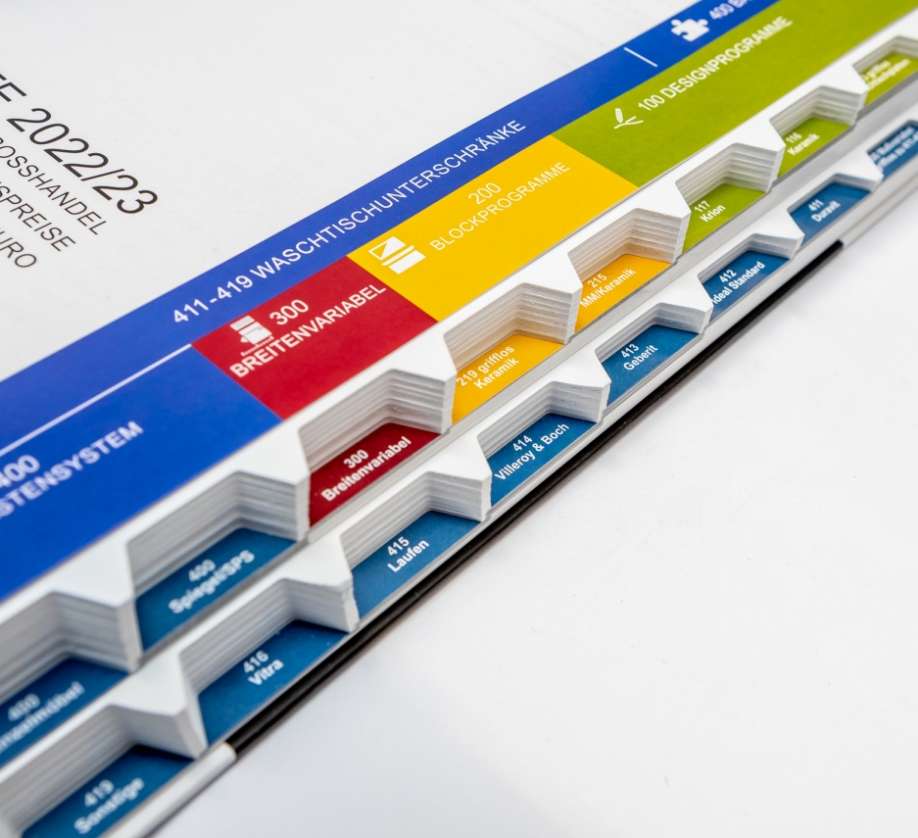
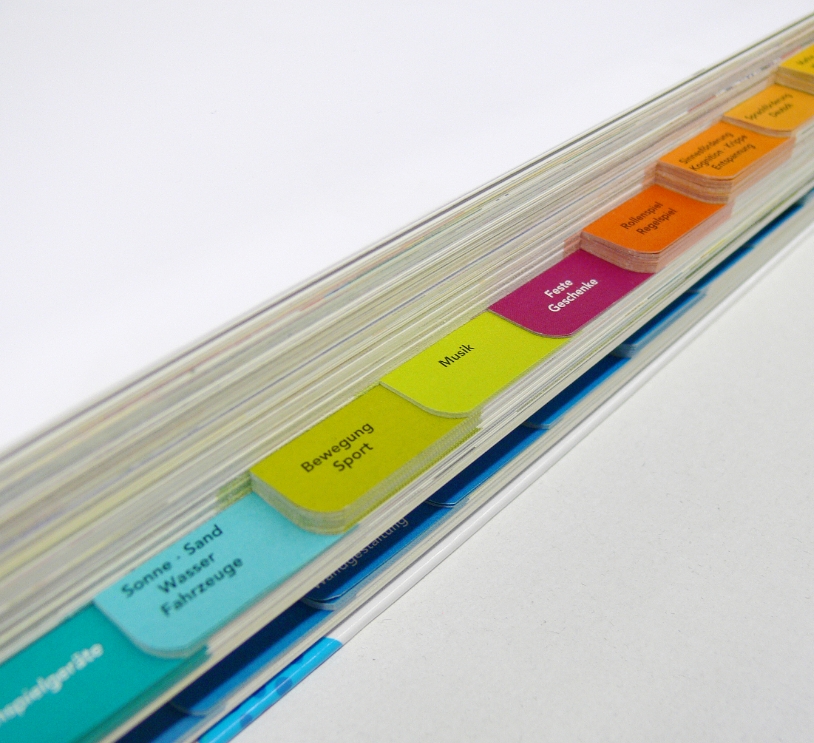
Form cut
The specialty of the form cut is the combination of a striking 90°-Angle (without rounding) inside and a smooth rounding at the outside. Thereby, the register appears very appealing to the user and stands out against other cutting forms like the angle cut.
Moreover, the large radius of curvature decreases the appearance of dog ears at its maximum, so that your product retains its shape even after prolonged use. The cutting depth is 14mm.
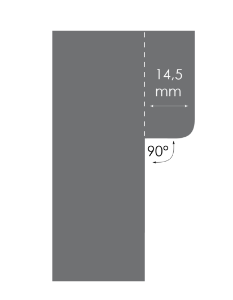
Step cut
The step cut is done by full cuts up to a cutting depth of 50 mm. In individual cases a cutting depth of up to 105 mm is possible. In order that each index is visible the first index (small page number) is cut the deepest. The step pattern becomes apparent, as the subsequent indices are gradually shortened less.
It is distinguished between two forms: Step cuts opposite to the spine and diagonally over the edge at the printing´s head or foot. The alternative over the edge is called corner step.
The step cut is especially suitable for small runs with few pages. It is the perfect choice for prospects or price lists. Note that the deeper an index is cut into the product, the smaller becomes the top page.
Step Cut
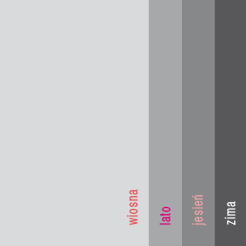
Corner Step Cut
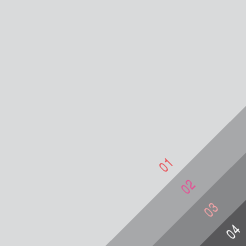
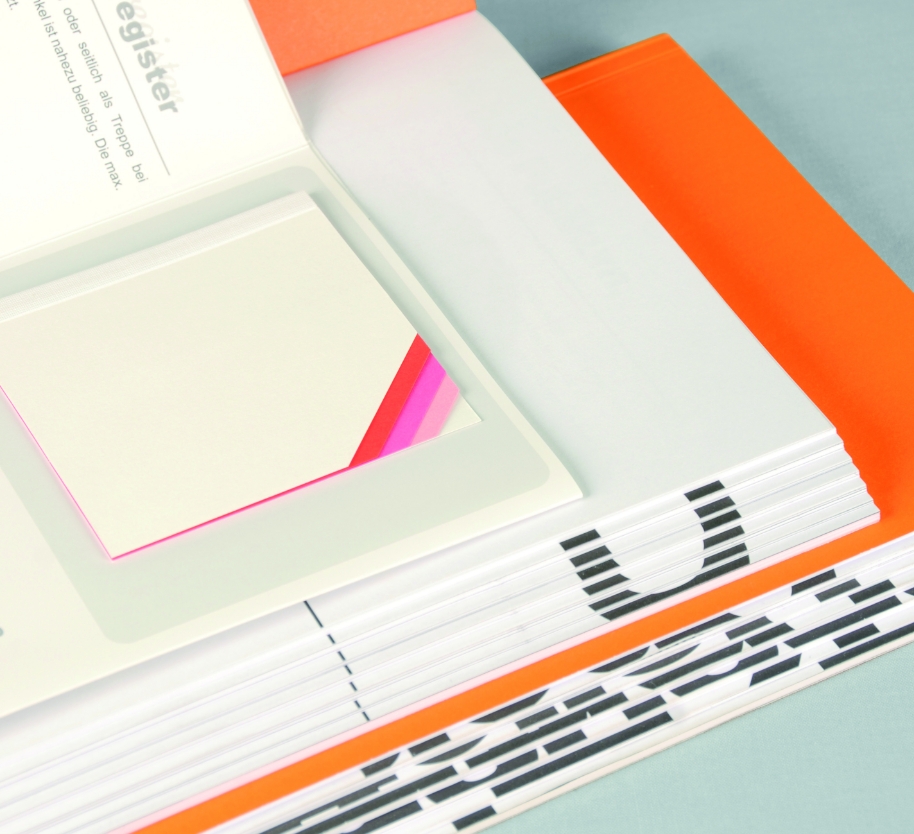
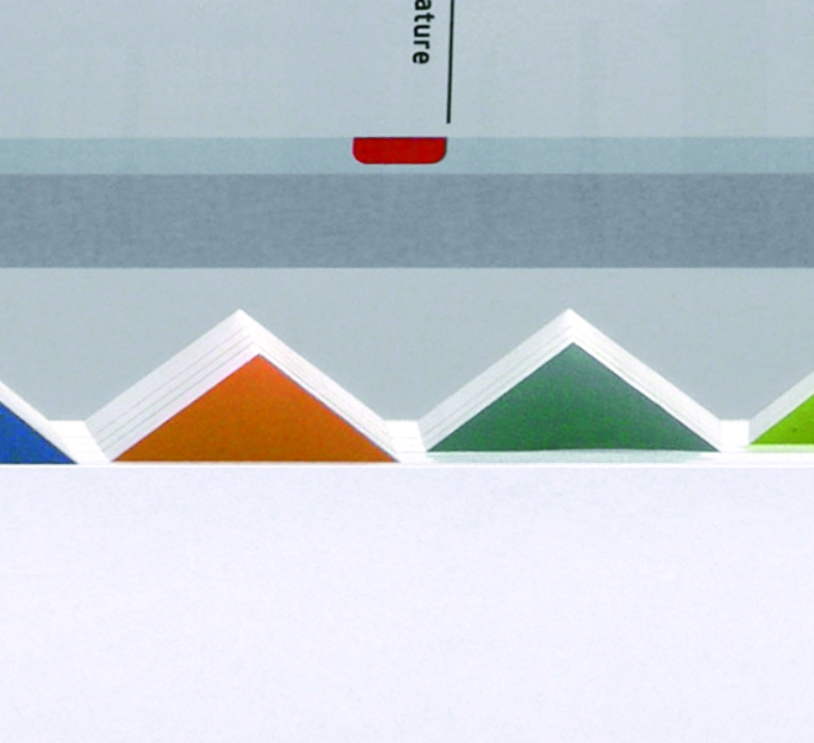
Special form cut
A part from only a few physical limitations, you are free to design your own cutting die. Give free reign to your fantasies and make, for instance, use of graphical elements of your company´s logo in order to create your personal and individual register. With knives especially crafted for you we can meet even the highest demands for individuality.
